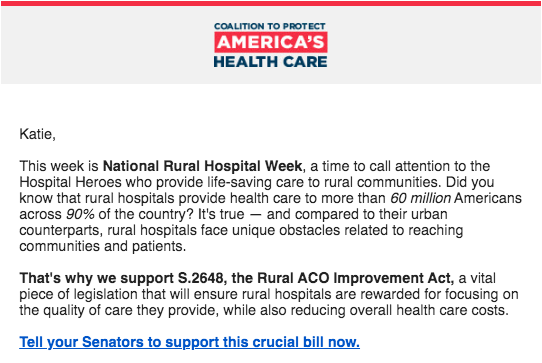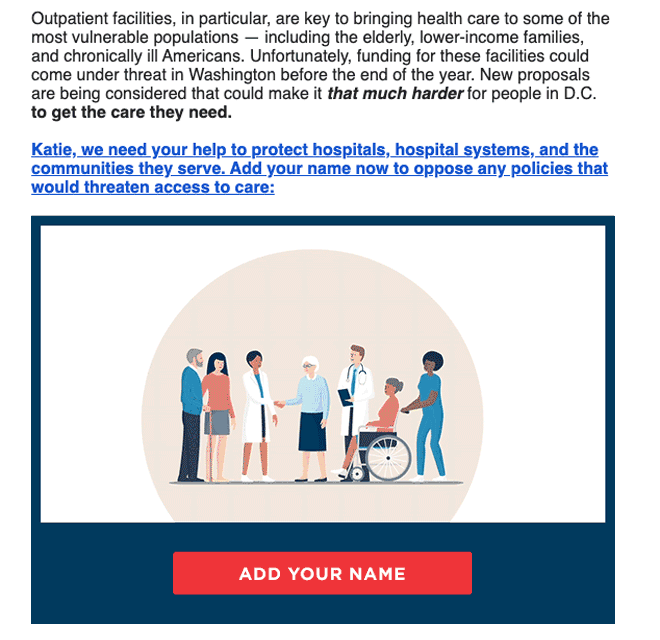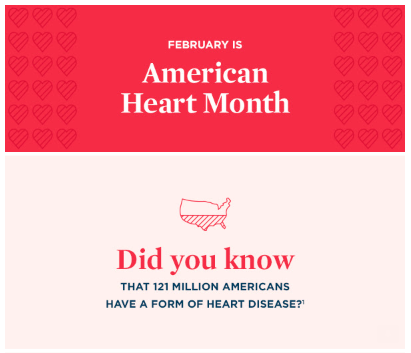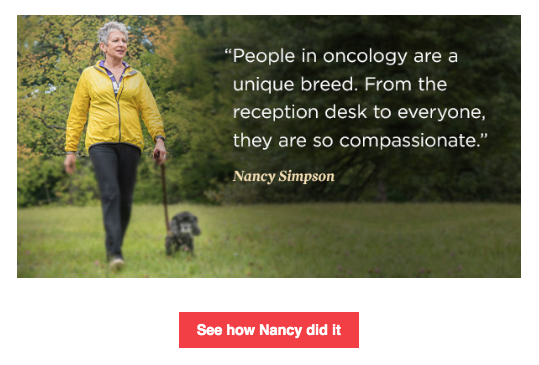This week, we’re co-presenting with our client, the Coalition to Protect America’s Health Care, at the Public Affairs Council’s Advocacy Conference. Since 2013, we’ve helped the Coalition, which represents 5,000 community hospitals nationally, mobilize millions to protect access to the best quality patient care.
In 2017, we called on our national community of supporters urgently and repeatedly as the Affordable Care Act (ACA) faced multiple threats of repeal. Time and time again, they showed up to defend the ACA — sending more than 550,000 letters to Congress.
But once you’ve mobilized a community of two million supporters in a series of high-stakes moments, how do you keep them engaged moving forward?
Sustaining momentum after the ACA fight
Our challenge today is to keep a mature list of supporters engaged for the future and to be thoughtful about investing in new acquisition.
Our always-on digital program focuses on protecting care and telling an impactful story around the positive, inspiring work from the world of hospitals. We build a narrative structure – not one-off, random asks.
Key tactics
1. Moments to mobilize: Find or create moments to mobilize your audience — even if those moments might not be obviously significant.

2. Narrative structure: Focus on a common narrative thread to develop campaigns, maintain consistent messaging, and prime your audience for a future mobilization moment. Break down complex issues to educate and prime your audiences.

3. “Soft” advocacy asks: Ask your community to complete soft advocacy actions – like pledge asks – to flex that muscle memory and prepare them for future “hard” advocacy calls to action.
4. Timely observances: Lean into awareness moments when relevant. These add value and justification to your content strategy and communications.

5. Storytelling: Bring your story closer to home by humanizing your organization’s mission through personal content pieces and specific messaging.

6. (Re)Engagement: Strengthen your engagement and re-engagement efforts with low barrier asks. For re-engagement especially, work with analysts to identify appropriate audiences. For example, you can start with the supporters who are most likely to re-engage, or the email domains least likely to bounce your message.
7. Personalized content: People like to be treated like…people! Include their name or state in subject lines — it’s eye-catching in the inbox, and it adds value to their relationship with your organization.
8. Respect for their investment: Reflecting a user’s interest and relationship with your organization can increase response rates. Diversify their calls-to-action to move them up the ladder of engagement and action. They’re ready for it!
9. Testing & analytics: Ask yourself what you want to learn about your audience and then test it. We use the audience demographic and interest information we’ve gathered over time to inform acquisition strategy, retarget constituents on other channels, and tailor creative to what supporters have demonstrated they want to see.
Remember: If what you’re learning doesn’t help you improve the audience’s experience, you’re testing the wrong things.
Need help implementing these tactics in your email program? Get in touch with us.